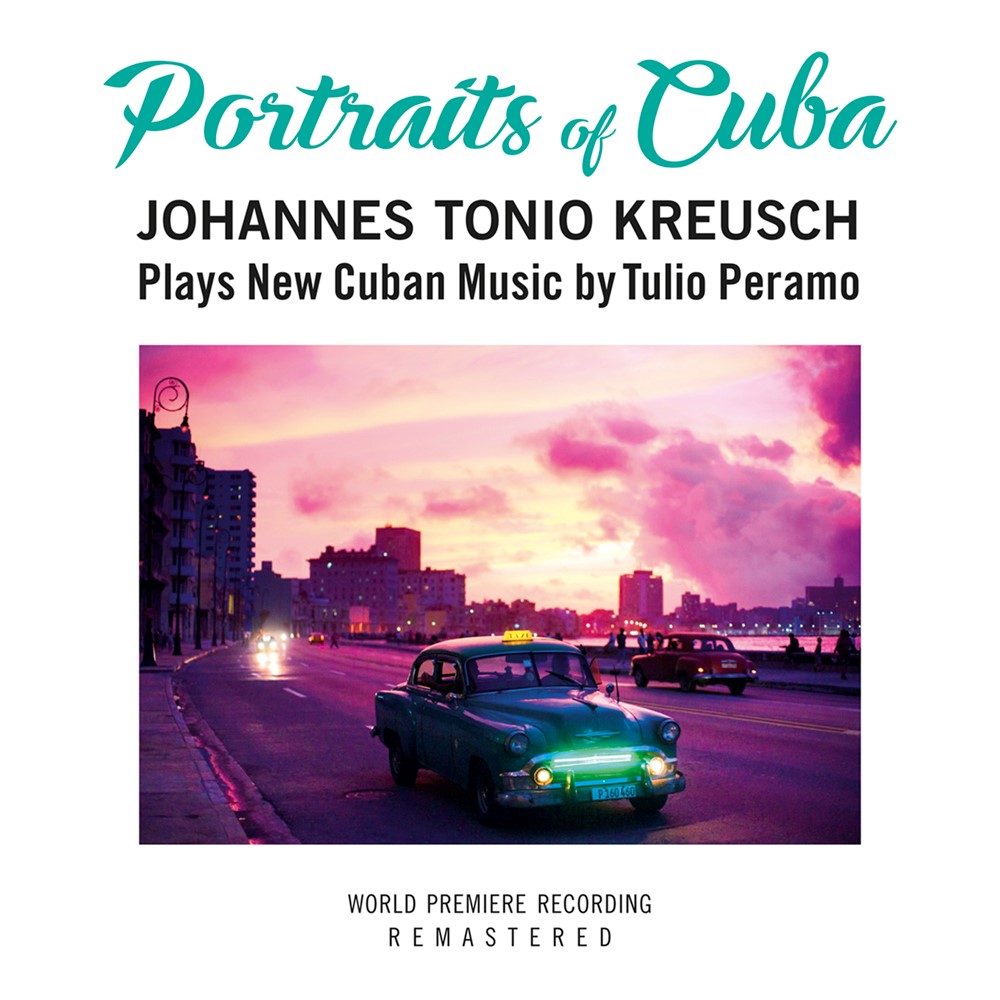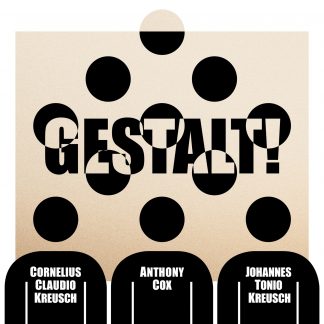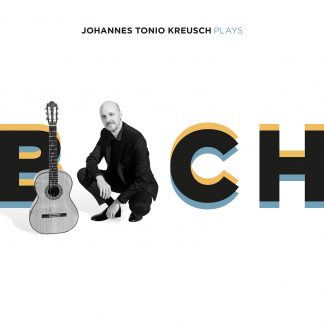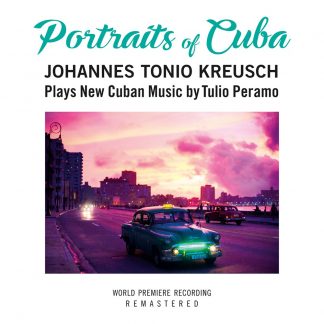Description
Johannes Tonio Kreusch – guitar
Nan-Maro Babakhanian – mezzo-soprano (1.-5.)
The Griffin String Quartet (11.-13.)
The story of an extraordinary friendship; the proof that music is the universal language of the globalised age, with which the whole world can be embraced and expressed without having to deny one’s own origins; the revelation that Cuban music is much more than we know from the “Buena Vista Social Club”: Portraits of Cuba” is all that. The album of guitarist Johannes Tonio Kreusch, on which the pieces from the late nineties are gathered on CD, which the Cuban composer Tulio Peramo wrote for him. In the remastered original recordings of the world premieres.
The search for the origins of this splendid, once again groundbreaking Kreusch album leads back to 1994, when Johannes Tonio Kreusch and Tulio Peramo met at the Havana Guitar Festival. Two who had more to talk about than musical petitessen: Kreusch, who was 24 at the time, had initially studied philosophy until the beauty of Bach adaptations for guitar completely absorbed him and led him to study at the Mozarteum in Salzburg and the Juilliard School in New York. At that time, he had just released his debut CD: “Ginastera – Bach – Brouwer”, already a triad of themes that occupy him to this day. Alberto Ginastera represents Kreusch’s penchant for the Ibero-American guitar tradition, Bach his classical foundation, and Leo Brouwer his love of Cuban music.
Tulio Peramo, on the other hand, was almost twice as old at 46 and had already undergone a radical artistic reorientation. He had started as a classical singer in opera. At the age of 26, he was disappointed by the hustle and bustle of this profession, which had little concern for the essence of music, so that he turned his back on opera: “I found myself at a ‘point of no return’, had lost everything, but still felt this deep longing for a new life for music,” he later reported. He found this new life in composing. In 1987 he won the Cuban League of Artists and Writers Prize for a piece, and in 1994 he won the Agustín Barrios Competition for original pieces for guitar in Paraguay.
The fact that Tulio Peramo is considered one of Cuba’s greatest composers today also has to do with this momentous meeting in 1994, and with the pieces that resulted from it and are collected on “Portraits of Cuba”. The album begins with the five-part song cycle “Aires De La Tierra”, composed in 1998, the result of Kreusch’s persistent persuasion that Peramo should bring his two musical souls, singing and composing, together again. Originally imbued with the firm resolution never to return to the singing world, Peramo fortunately succumbed to the urging here. The five songs premiered and recorded by Kreusch with mezzo-soprano Nan-Maro Babhakanian at New York’s Carnegie Hall in 1999 are enchantingly beautiful and, like all of Peramo’s compositions, they spread out the entire musical heritage of his homeland.
In addition to forms such as clave, rumba, bolero, son or changuí, this also includes the most diverse foreign influences: African rhythms, Spanish folklore, related forms from the other Caribbean islands, blues and jazz from the USA and, last but not least, Central European, especially French classical music, as it was already reflected in the early Cuban styles of habane-ra and danzon. All of this can be found in Peramo’s palette, from which he assembles his musical images of Cuba in his very own way. Like the “Tres Imágenes Cubanas”, Peramo’s first composition for Kreusch from 1996, premiered a year later at the International Guitar Festival in Havana. And recorded here in the version performed during a tour of the USA in 1999 with the magnificent Griffin String Quartet. The first movement, “Mosso Ritmico”, is reminiscent of Debussy’s “Golliwogg’s Cake Walk”, albeit in Caribbean garb and with a dash of Gershwin. At the same time, it is a homage to Alejandro Garcia Caturla, the most famous representative of Afro-Cubism in the twenties and thirties, and his “Obertura Cubana”. Rondo, sonata or song form – the influences of European classical music are just as present in the other parts as African “Conga” or Cuban “Guajira”.
Peramo’s most emotional and profound composition for Kreusch is probably “En Tardes De Llu-via”, translated: “On rainy evenings”. The five-part suite for solo guitar breathes the long conversations and shared experiences during Kreusch’s stay in Cuba in May 1999 and the joint visit to the Metropolitan Museum of Art during Peramo’s first stay in New York a little later, which resulted in this composition commission. Like the birthday miniature “Canto De Septiembre” that closes the album, it is a masterpiece of impressionistic expression with the possibilities of the guitar: poetic and meditative, but also tense and rousing.
“It remains a wonder to me how someone can capture the soul of the guitar in such a refined way without playing the instrument itself,” says Johannes Tonio Kreusch. On “Portraits of Cuba” he brings this wonder to life for everyone.






Reviews
There are no reviews yet.